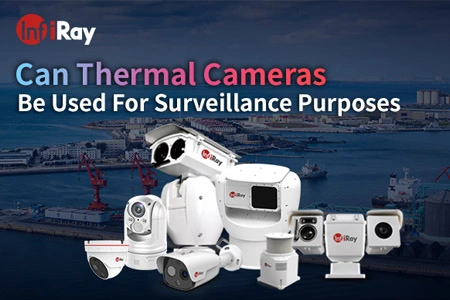What are the Manufacturing Industrial Uses of Thermal Cameras

In the vast and intricate world of manufacturing, ensuring product quality, safety, and efficiency is paramount. One technological marvel that has significantly contributed to achieving these goals is the thermal camera. Thermal cameras, with their ability to detect and measure temperature variations without direct contact, have found a plethora of applications in various manufacturing processes. This blog delves into the industrial uses of thermal cameras, highlighting their impact on enhancing product quality, safety, and operational efficiency.
Understanding Thermal Cameras
Thermal cameras, also known as infrared cameras, translate thermal energy (heat) into visible light to analyze a particular object or scene. The technology behind these cameras allows them to detect temperature differences as minute as 0.01°C, making them invaluable tools in manufacturing settings where precision is crucial.

Key Benefits of Using Thermal Cameras in Manufacturing
The adoption of thermal imaging technology in manufacturing offers several benefits, including:
Non-contact Temperature Measurement
This allows for the monitoring of equipment and processes without the need for physical contact, reducing the risk of damage or interruption.
Preventive Maintenance
By detecting abnormal temperature variations, thermal cameras can identify potential equipment failures before they occur, minimizing downtime.
Quality Control
Thermal imaging can reveal inconsistencies and defects in products by detecting irregular thermal patterns.
Safety Enhancement
Thermal cameras can identify overheating components or equipment, reducing the risk of fires and accidents.
Energy Efficiency
By identifying areas of energy loss, such as poor insulation or air leaks, thermal cameras can help in optimizing energy use.

Applications of Thermal Cameras in Manufacturing
Mold Processing Quality Monitoring
Thermal cameras, like the S1280, are used to ensure molds are heated to the correct temperatures during processing. This prevents overheating or undercooling, and also allows for the observation of heat distribution in products to identify weak or damaged areas early, improving yield rates.

Fiber Welding Quality Inspection
The AT61P Remote Temperature Monitoring System is adept at inspecting fiber optic welding, detecting optical discontinuities and defects that could lead to overheating, damage, or destruction of the fiber.

Coating Uniformity Testing
The quality of internal coating applications, crucial for anti-corrosion measures, can be assessed using thermal cameras like the AT1280. These devices provide high-definition thermal images to inspect the quality state of coatings.

Lithium Battery Aging Test
Thermal cameras, such as the AT20 Continuous Temperature Monitoring Device, are instrumental in observing the overall temperature of batteries during aging tests. They help in identifying battery issues early by linking high temperature and temperature rise alarms, thus improving product yield rates.

Restricted Space Cable Safety Monitoring
Compact thermal cameras like the C200+ Handheld Thermal Imager can monitor connections and cables in narrow spaces within component cabinets, effectively preventing safety risks due to component aging or damage.

Module Performance Testing
The AT31F Online Thermographic Fixed Thermal Camera is used for real-time temperature monitoring of semi-finished hair curler modules. It is linked to external audio-visual alarm devices, providing alerts for long periods of unattended operation to avoid overcharging and equipment wear.

Choosing the Right Thermal Camera for Your Manufacturing Needs
Selecting an appropriate thermal camera involves considering factors such as resolution, temperature range, sensitivity, and whether a fixed or handheld device is more suitable for your application. Integration with existing manufacturing systems and the ability to provide real-time alerts are also crucial considerations.
Future Trends in Thermal Imaging Cameras for Manufacturing
The future of thermal imaging in manufacturing looks promising, with advancements in technology expected to introduce new applications and increase industry adoption. The integration of AI and machine learning is set to enhance the analysis capabilities of thermal imaging, making it even more indispensable in manufacturing processes.

Thermal cameras have revolutionized manufacturing processes by offering non-invasive, precise temperature measurements, enabling preventive maintenance, and ensuring quality control and safety. As technology advances, their role in manufacturing is set to grow, making them an essential tool for any manufacturing operation focused on efficiency, safety, and quality.
Consider integrating thermal imaging technology into your manufacturing processes to reap the benefits of enhanced efficiency, safety, and product quality. Contact a thermal imaging expert today to find the perfect solution for your needs.

 français
français  Deutsch
Deutsch  Español
Español  italiano
italiano  русский
русский  português
português  العربية
العربية  日本語
日本語  한국어
한국어  magyar
magyar 









